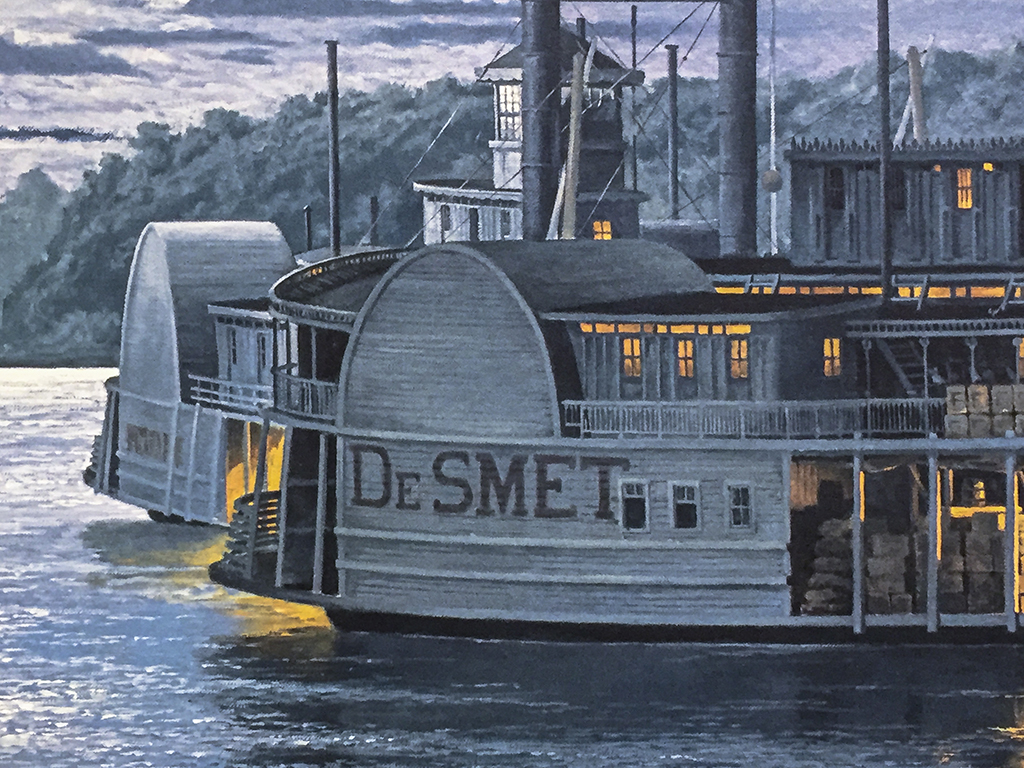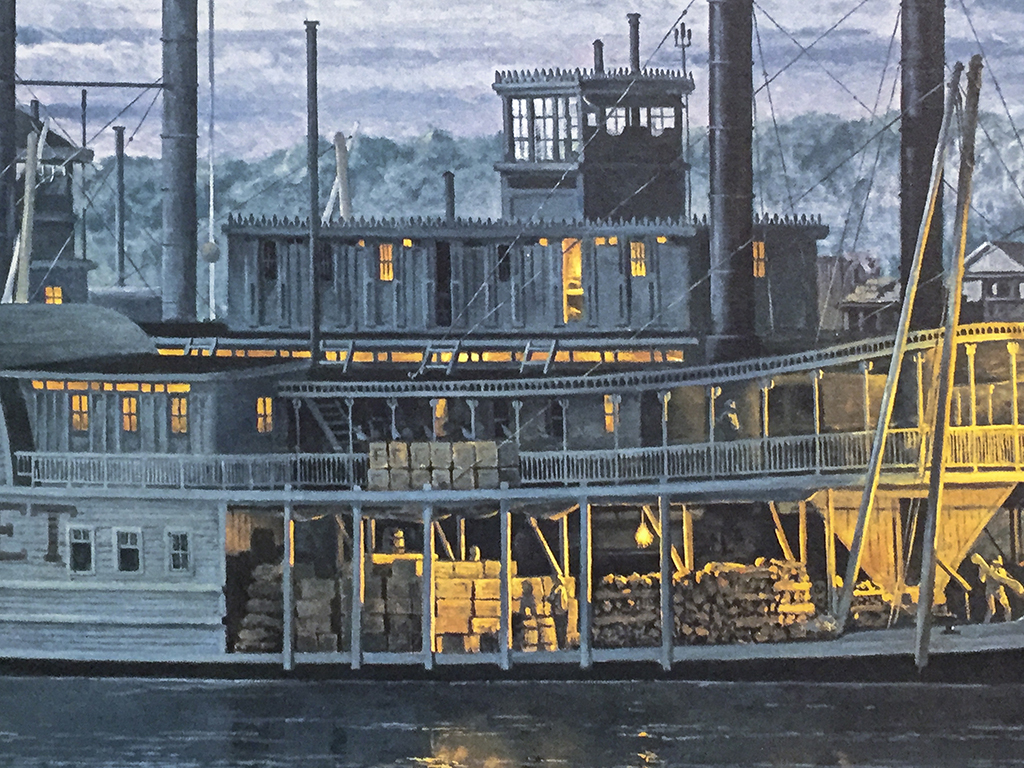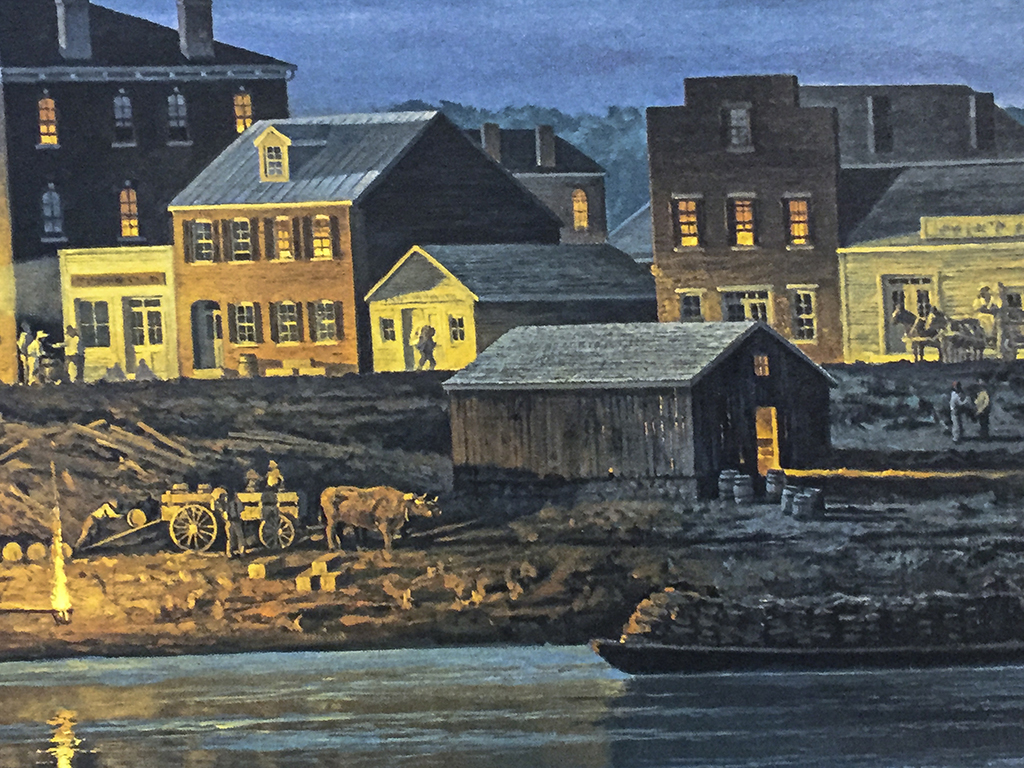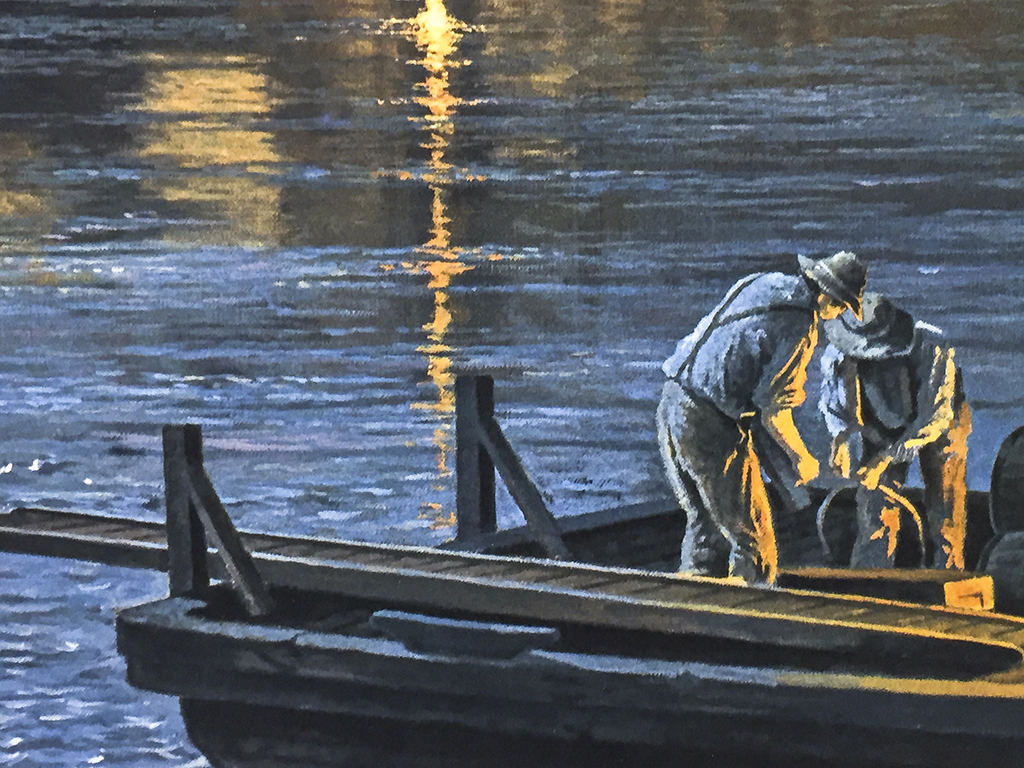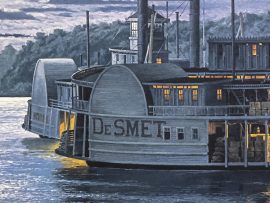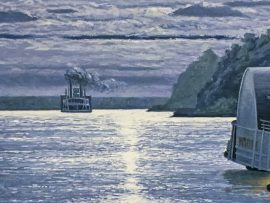The DeSmet
$200.00 – $350.00
HAVE ONE REMARQUE AVAILABLE
The DeSmet “Overnight in Hermann Landing, 1873” depicts an evening where we see a new form of transportation speeding past the buildings of the Hermann riverfront. We may view the railroad rushing past the idle steamboat as a symbol of the future domination of the rail system. The river, at this point in time, is now beginning to accept a secondary role in transportation. For thousands of years, the Missouri River has carried its share of river craft past this general location; and, for the first time in history, the waterways of the world are losing their position of dominance to the emergence of the industrial age.
The nocturnal setting features a view of many Hermann, Missouri’s first permanent buildings including the historic White House Hotel. As in most river communities, the display of rich and rugged architecture is a clue to the optimism for the future expressed by the founders of each settlement along the routes of America’s Inland Waterway System.
Only a few years earlier, the Hermann riverfront was a primary shipping point for many of the iron products used to build the American West. The Hermann Landing was often referred to as “The Iron Landing.” Maramac Iron Works, the first iron foundry west of the Mississippi River, was founded in St. James, Missouri in 1826. Products were shipped on wagons drawn by oxen across the “Old Iron Road” and down the Gasconade River to the busy river port of Hermann. The asset of the river literally gave Hermann access to the world and its markets.
The DeSmet, of course, is one of the primary subjects depicted in the interpretation. She was built and piloted by the famed riverboat captain Joseph LaBarge. Named after and blessed by LaBarge’s old and good friend Father Pierre DeSmet, the DeSmet, on its way past Hermann Landing, was one of the last side-wheel steamers to make its way to Ft. Benton, Montana. With her free-form beauty, the DeSmet typified the graceful swans of America’s Inland Waterways; and, was typical of the workhorse steamers used in the development of 19th century America.


